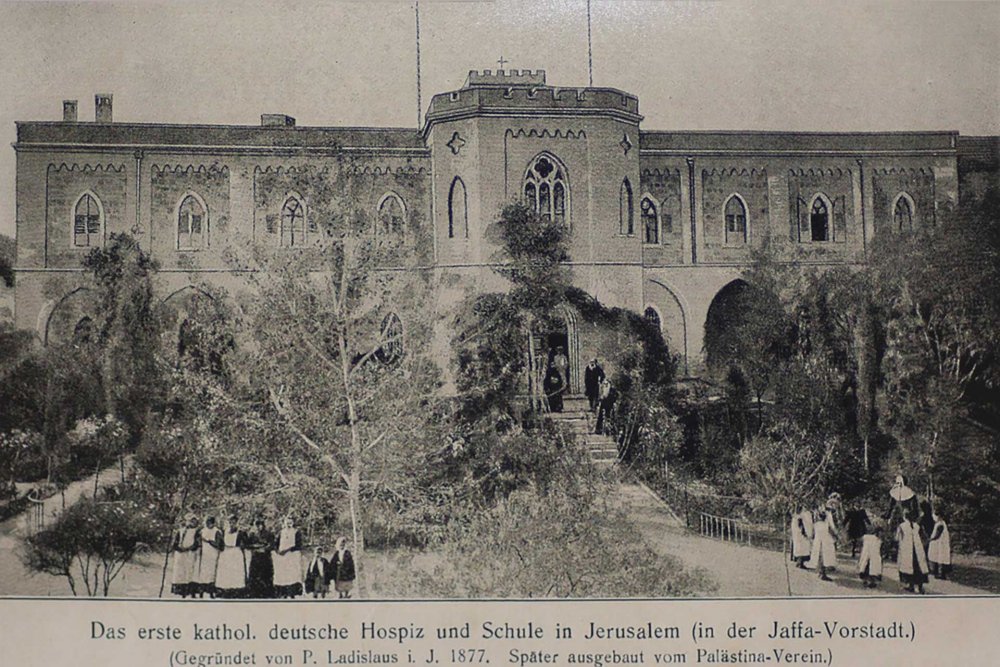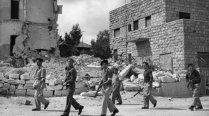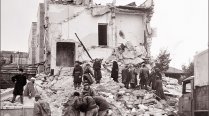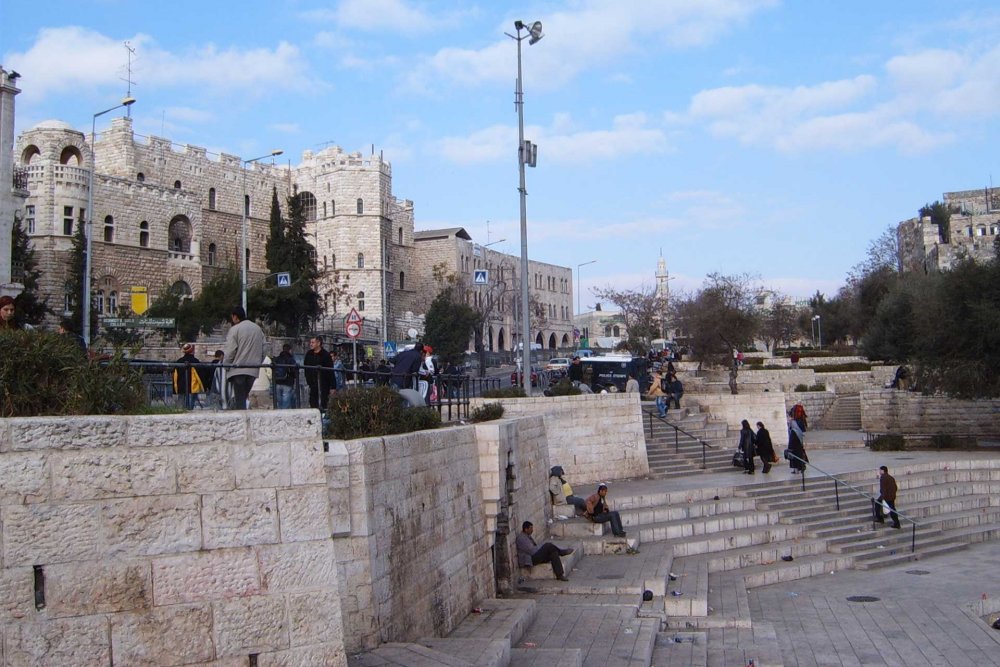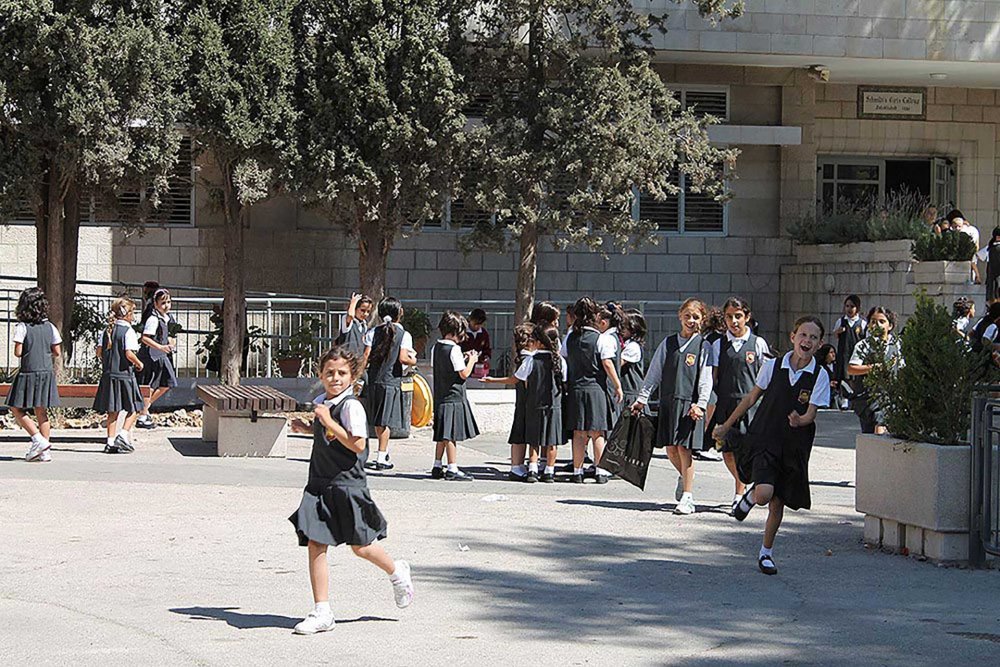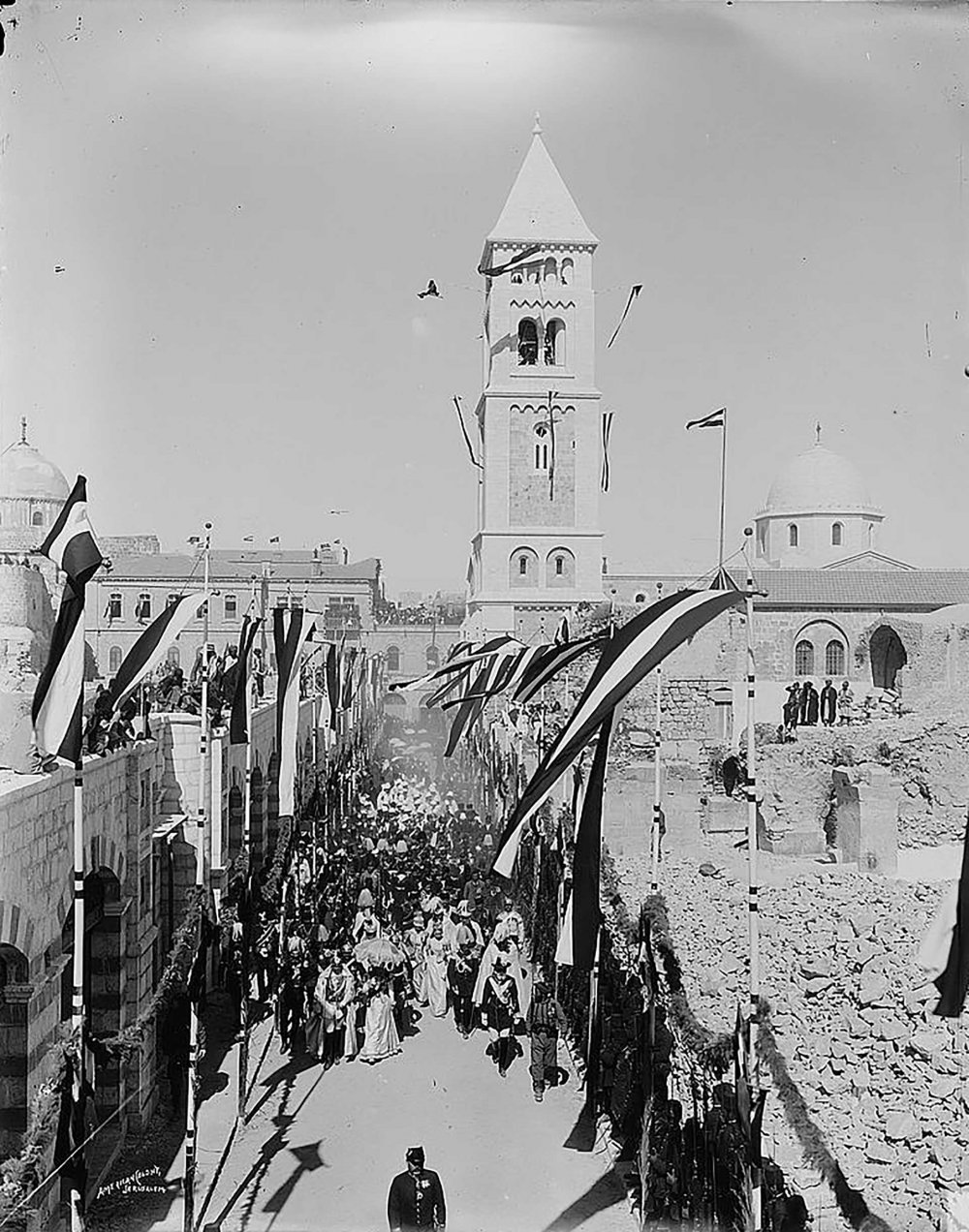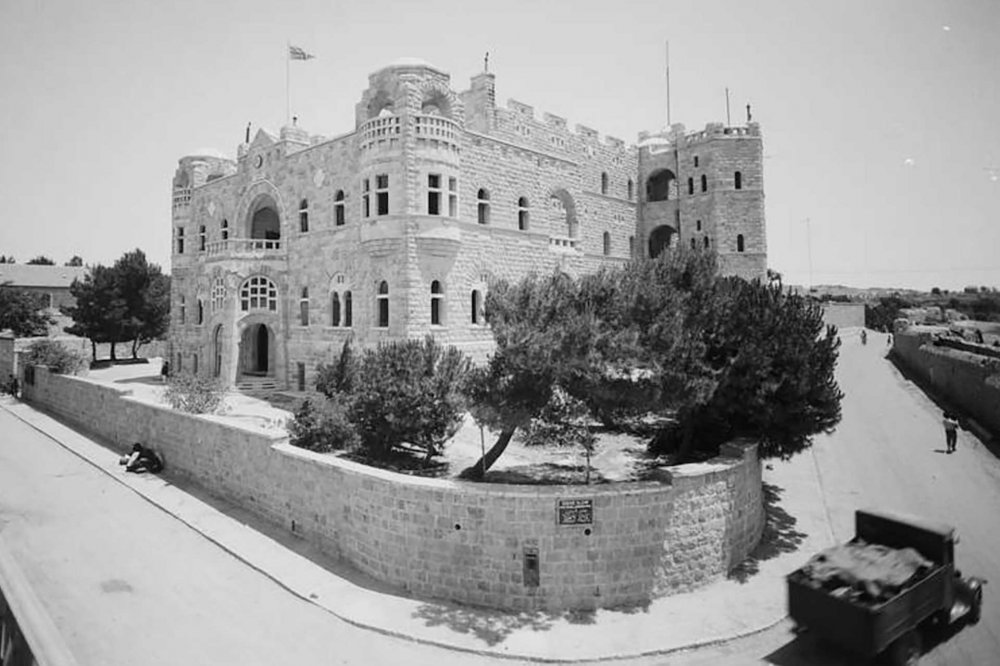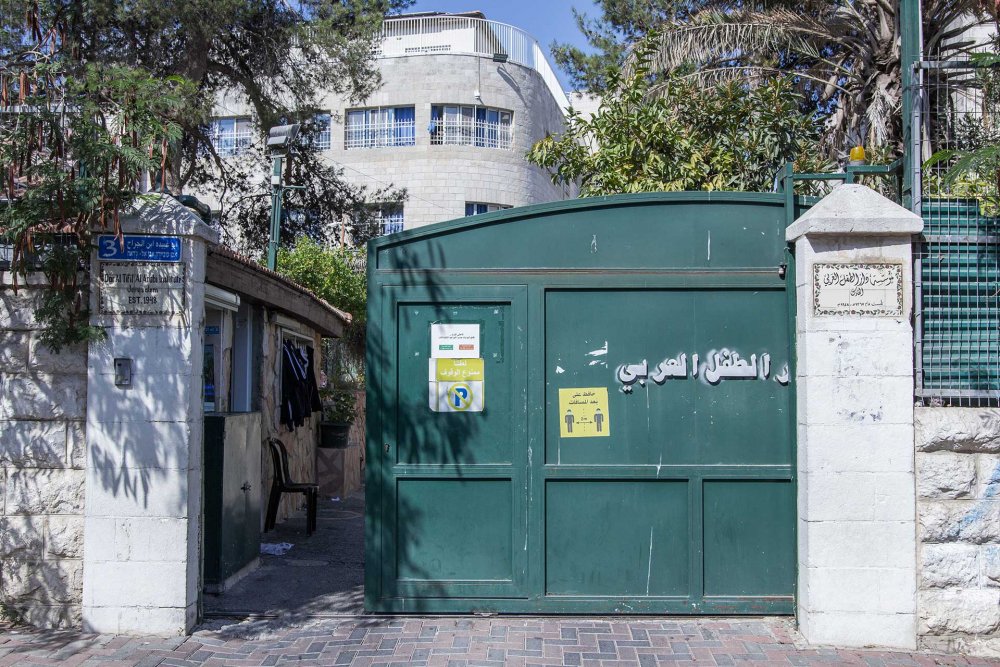Finally, you see the place that was dear to all students, an independent one-floor building that housed within its walls the auditorium. This last building was located at the end of the playground, facing the wall, and stretched vertically alongside the playground. The auditorium was where the end of the year celebrations took place. It was also where we, the non-boarding students, ate lunch every day, and then ran into the big playground.
Every morning, we stood in line in the playground facing the classroom building. We would then head in orderly fashion to our classrooms, one class in turn after the other. Each class with its teacher would enter the building where elementary and secondary classrooms were distributed on two floors. The playground was a few steps higher than the first level. We, the younger students, used to descend the steps with serenity, crossing the path separating the playground from the classroom building, where I spent some of the happiest years of my life. The ground floor included the dining hall for the boarding school students. Next to it was my favorite place in the school, the stationery shop. The nun stationed there would open the window that overlooked the external hallway, so that we could buy supplies we needed during the recess. There we would find the best notebooks, pens and coloring pencils, and all the writing supplies we might need. I loved the place, and buying stationery continued to be one of my pleasures, even if I did not have a real need for them.
I was in the second grade when the math teacher, Mrs. Khoury, who was a new teacher back then, entered our class for the first time. I was startled when she asked me after reading my name: “You, Nuwayhed, do you know Khaldoun Nuwayhed in al-Umma College?” I said proudly: “Khaldoun is my brother.” She smiled and said: “I taught him in al-Umma College, and he was one of my best students. I sure hope you are as hard working as he is. Please give him my regards.” I couldn’t believe what she said. As soon as I got out of the bus with my sisters, Nora, and Sawsan, who was two years older than me, I leapt up the stairs, and there was Khaldoun, the eldest, waiting for us at the end of the first school day. I told him while still gasping for air: “Mrs. Khoury sends her regards . . . and she said that she hopes I am as hard working as my brother. . . .” Consequently, Khaldoun diligently helped me study math, until I became, as she hoped, one of her best students.
I also remember Miss Hannoush, my Arabic teacher, from when I was a bit older. She was an excellent and serious teacher who seldom laughed, but I liked her because I liked the Arabic lessons. I also liked English but, unfortunately, I do not remember any of my English teachers. As for German, it was banned under the British Mandate. The nuns did not teach elementary classes, but nevertheless I still remember some of their names, faces, and voices because we saw them in the playground every morning, and at numerous events. I will start with the director, Sister Elia.3 She was strict, and her loud voice was often heard resonating in the playground. The school principal Father Sonnen was very quiet, and although we barely saw him, I will always remember him. Neither can I forget Sister Angelina, Sister Ghida, Sister Renata, and Sister Ludmilla. As for the priests, the most famous of them was Father Curles, the art teacher, whose talent and gentleness prompted the girls’ eagerness to learn painting.
When I was in the fourth grade and Sawsan in the fifth, we went home with the first semester’s report card of the three-semester academic year. Our grades that semester were apparently bad—I must admit that actually they were the worst. According to the school system, grades were arranged starting with the best in class, but not ending with the worst as one would expect, as the administration did not write down the grades of the last three or four students, probably to spare them the humiliation. The lack of written grades, however, obviously meant that the student in question was at the bottom of the class.
My mother opened the two envelopes and read the cards. When she found no grades, her anger became evident on her face. She said sternly: “This is an unpleasant surprise! What shall I tell your father when he gets home? Listen carefully, these marks should change next semester, and until then you are banned from playing with your friends in the neighborhood.”
My brother Khaldoun saved us by helping us with our homework every day. He used to say, for example, “You have two hours to study, a little bit less or a little bit more maybe.” He checked on us every now and then and answered any questions we had. After he made sure that we studied well, he would set us free. I couldn’t have guessed the results of the second semester, but given the teachers’ encouraging words I was sure I was doing better. We took our report cards and went home, my performance had improved significantly. I came in fifteenth place out of thirty students. Sawsan also made a significant leap, but I do not remember her ranking. Khaldoun continued to help us with our studies, and when we received our report cards at the end of the third semester, I remember that it was one of the happiest days of my life. How was it possible that I was seventh in class despite the very low marks I got in the first semester? That was definitely my first taste of success.
After this success we were finally allowed to play with the neighbors as much as we wanted. Our home was in Upper Baq‘a on the street parallel to the railway, and the street separating between our houses and the railway was our main playground. Busses never drove in our street, not even the school bus, which we waited for on the other side of the railway. As for cars, only a few of them drove through our street, which was not paved yet, but the lack of asphalt was not a problem for us. On the contrary, it was a welcomed buffer that spared us many broken bones.
Our favorite game was “Xs,”4 and there were different ways to play it. We would draw the shape we wanted with chalk on the ground in one of the gardens. Then we would bring a flat stone, and the winner was the girl who could carry the stone through the squares and other shapes while hopping on one foot without making any mistakes. We also used to play with a metal hoop, very similar to a hula hoop, that we would roll down the street while running next to it, and the winner was the girl who could roll it the longest distance.
The mother of all games, however, was kite flying. We used to make kites with our own hands and tie them to a strong string that rolled out of a string ball. We used to run as fast as we could until the kite would gradually start to rise; the higher it went the more string we pulled until it flew very high. That was our favorite game. We were exhilarated whenever a train passed by while we were flying our kite; the passengers would clap and wave at us from the train’s windows. But we often took a break from playing, and talked about the next year; will the British really leave Palestine in a year as they said? Will the Mandate really end?


